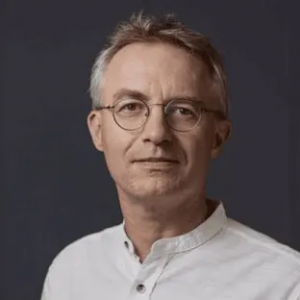SAIP 2025
Plenary SPEaker

Speaker: PROFESSOR VAL ZWILLER
Title: Generation and detection of light at the single photon level
Abstract
We develop quantum devices to enable the implementation of quantum technologies based on controlling light at the single photon level with the aim of on-chip integration and novel instrumentation. Future quantum communication and sensing will require high-performance quantum devices able to generate and detect light one photon at a time. Schemes to manipulate light on-chip, based on integrated photonics, are carried out in our group. Single photon sources based on semiconductor quantum dots can generate single as well as entangled photon pairs at telecom wavelengths to enable implementation of long-distance quantum communication. We operate a quantum network made of deployed optical fibers in the Stockholm area and demonstrate single photon transmission and quantum key generation over 34 km.
The ability to detect single photons is crucial for quantum optics as well as for a wide number of applications. Several technologies have been developed for efficient single photon detection in the visible and near infrared. The invention of the superconducting nanowire single photon detector in 2001 enabled the development of a new class of detectors that can operate close to physical limits. Different aspects will be discussed including wavelength detection range, time resolution, dark counts, saturation rates and photon number resolution along with various applications such as Lidar, quantum communication, deep space communication, microscopy and bio-medical measurements.
Multipixel single photon detectors based on superconducting nanowires will also be discussed, including a quantum spectrometer that is based on an array of high-performance single photon By time stamping single photon detection events at the output of a spectrometer we generate data that can yield spectra as well as photon correlations such as g(2), g(3) to g (n) as well as cross correlations among different spectral lines, under pulsed excitation, transition lifetimes can also be extracted. This instrument therefore replaces a spectrometer, a streak camera, a Hanbury-Brown Twiss interferometer and operates with far higher signal to noise ratio than is possible with existing detectors that are commonly used in the infrared.
Biography
Val Zwiller is a professor of physics at the Royal Institute of Technology (KTH) inStockholm, Sweden, where he heads the Quantum Nano Photonics group in the Department of Applied Physics. He is also Chief Science Officer at Single Quantum, a company which he co-founded in Delft, Netherlands, which develops single photon detector technology. He studied at Strasbourg and UC Berkeley and obtained his PhD from Lund University in 2001. He was an assistant professor at EPFL Lausanne and ETH Zurich before appointment as an associate professor at TU Delft and later as a full professor at KTH with a joint appointment at the Karolinska Institute to develop quantum science for life sciences. He is Chief Editor for Quantum Optics at Frontiers in Photonics, founder of Quantum Scopes AB, and a referee for Nature, Science, Nature Physics, Nature Photonics, Nature Materials, Nanoletters, Physical
Review Letters, Physical Review B, and Applied Physics Letters. He is also deputy representative for Sweden to the European Quantum Flagship. Val Zwiller’s research lies at the intersection of quantum optics and nanoscience where fundamental questions meet technology. His team develops new systems to generate, manipulate and detect quantum states of light and proceeds to demonstrations. They use advanced nanofabrication techniques to develop their quantum devices and perform most of their measurements at cryogenic temperatures with custom-made equipment allowing for optical and electrical measurements at the single photon level.


